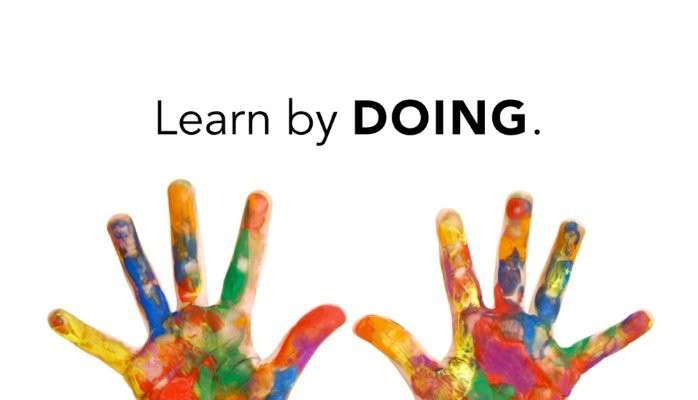
Experiential learning was coined by psychologist and learning theorist, David Kolb in 1984. According to Kolb, knowledge is formed through active participation from the learner and their environment through real-life experiences and through the reflection of those experiences (Kolb, 1984).
What are the characteristics?
Kolb (1984) described the characteristics of experimental learning as…
- Learning is not an outcome: Instead of viewing learning as the meeting of a learning outcome, we should recognize that learning can be formed through development.
- Learning is continuous: As we learn through experience, our knowledge is constantly changing to form new ideas in replacement of old ones.
- Learning involves balancing opposed abilities: Learners must choose which set of learning abilities they will show in a given learning situation (There are four abilities in this case: concrete experience, reflective observation, abstraction conceptualization, and active experimentation).
- Learning involves transactions between the learner and the environment: Learners will obtain knowledge when they are interacting with the activity in a real-life situation.
- Learning is the process of creating knowledge: To understand learning, we must also understand that knowledge is a transaction between social knowledge and personal knowledge.
How can we implement this in classrooms?
- Field trips
- Role-playing
- Reflection activities
- Peer-tutoring
- Student-run class discussions
What are the benefits of this learning?
According to the website, Experiential Learning Depot, experiential learning…
- Links theory to practice
- Promotes creativity in students
- Increases students’ engagement
- Accelerates the speed of learning
- Promotes life-long learning
Experiential learning and growth mindset

Experiential learning aligns seamlessly with a growth mindset because a growth mindset involves the active transaction between the learner and the environment in order to shift their mindset from a stagnant, negative place to a continuous, positive one. Additionally, a characteristic of experiential learning is that it does not view learning as an outcome which is also true of the growth mindset which views learning as a way to grow and develop new skills.
This learning strategy will be utlilized within my Interactive Learning Resource because in order for children to utilize a growth mindset in their own lives, they must engage in real-life practice and scenarios. This will be obtained through activities such as…
- In pairs, students will be provided with a story where a child is met with a challenge. Students will brainstorm ideas of different thoughts and behaviours the child could have in a fixed/growth mindset and how that would change the subsequent behaviour. Pairs will then present their ideas to another group via breakout rooms.
- Students will display their learning in a medium of their choice (write/draw a picture/make a video etc.). Share a time when you were met with a challenge and did not use a growth mindset. Modify the scenario using a growth mindset. What actions were involved and what was the result?
References
Kolb, David. (1984). Experiential Learning: Experience As The Source Of Learning And Development.
Segar, S. (2021, August 31). The benefits of experiential learning. Experiential Learning Depot. https://www.experientiallearningdepot.com/experiential-learning-blog/the-benefits-of-experiential-learning
Recent Comments